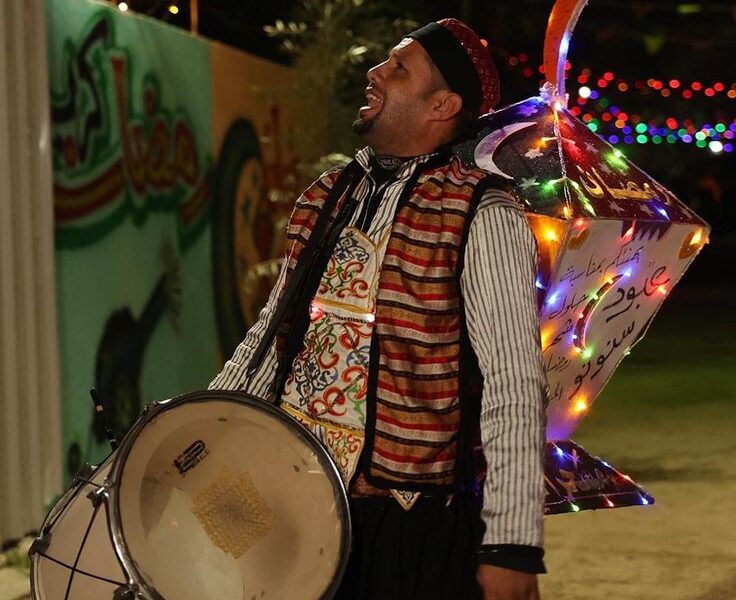Ramadan is a time of spiritual reflection, fasting, and community, but did you know that the way it’s celebrated can vary wildly around the world? From lantern-lit streets in Egypt to drumbeats echoing through Turkish neighborhoods, each country brings its own flair to this sacred month. Whether it’s feasting on special dishes like “Bubur Lambuk” in Malaysia or lighting up the night with vibrant “Fanoos” in Morocco, Ramadan’s global customs create a rich tapestry of culture, tradition, and togetherness. Let’s take a world tour and discover how different corners of the globe embrace this holy month in their own unique ways!
United Arab Emirates – Iftar tents and Cultural Events

- Iftar Tents: The UAE is famous for its grand Iftar tents, where large groups gather to share meals during Ramadan. These tents can be set up in luxury hotels, mosques, or public spaces.
- Ramadan Majlis: In the UAE, “Majlis” refers to a gathering space for socializing, and during Ramadan, families and friends invite guests to breakfast together in these communal spaces.
- Cultural Programs: Various cultural performances, concerts, and exhibitions are held in the UAE during Ramadan, fostering a sense of community and culture.
Morocco – Hammams and Street Lanterns

- Hammams (Public Baths): In Morocco, many people visit public baths, or hammams, during Ramadan. This is a ritual to cleanse and refresh the body before the evening meal, especially after a long day of fasting.
- Lanterns (Fanoos): During Ramadan, Moroccan streets are often decorated with colorful lanterns that light up the night. The tradition of hanging lanterns comes from the time of the Fatimid Caliphate, where people used them to light up their homes and mosques during Ramadan.
Egypt – Fanoos and Special Sweets

- Qatayef: A special dessert made of stuffed pancakes, filled with sweet cheese, nuts, or cream, is commonly served during Ramadan. Egyptians enjoy these as part of the Iftar meal.
- Taraweeh Prayers in Historic Mosques: In Egypt, there is a tradition of performing Taraweeh prayers (night prayers) in famous mosques, particularly the Al-Azhar Mosque in Cairo, which holds a special place during Ramadan.
Turkey – Ramazan Pidesi and Local Festivals

- Ramazan Pidesi (Ramadan Bread): In Turkey, a unique round bread called “Ramazan Pidesi” is baked during the month of Ramadan. It’s often shared with family and neighbors during Iftar and is a symbol of Ramadan in Turkish homes.
- Iftar Festivals: Turkish cities often hold large communal Iftar festivals, where people come together in public parks or streets to break their fast. It’s a time for unity and sharing with neighbors and strangers alike.
- Drummers (Ramazan Davulcusu): In some parts of Turkey, a traditional drummer walks through neighborhoods before dawn to wake people up for Suhoor (the pre-dawn meal).
Indonesia – Takjil and Bedug

- Takjil (Iftar Snacks): In Indonesia, breaking the fast with light snacks, known as “Takjil,” is a common practice. These include fruits, fried snacks, and sweet drinks like “Es Buah” (fruit cocktail).
- Bedug (drum): The sound of the Bedug (a large drum) being struck marks the end of the fasting day. In some regions, it is played in mosques to announce the Maghrib prayer time.
Pakistan – Chand Raat and Mehndi

- Chand Raat (Night of the Moon): The night before Eid, known as Chand Raat, is a major celebration in Pakistan. People gather in markets to shop for clothes, jewelry, and henna (Mehndi), marking the end of Ramadan.
- Mehndi (Henna): Applying Mehndi, particularly intricate designs on hands, is a traditional custom during Ramadan and Eid, and it’s a festive practice that often happens before Eid celebrations.
India – Shahi Iftar and Chand Raat Celebrations

- Shahi Iftar: In regions like Hyderabad, India, elaborate Iftar meals called “Shahi Iftar” are prepared with rich, royal dishes such as haleem, kebabs, and biryani.
- Chand Raat: Similar to Pakistan, India also celebrates the night before Eid with vibrant markets and street parties where people get henna designs and prepare for the festivities.
Malaysia – Bubur Lambuk and Street Food

- Bubur Lambuk: A famous dish served during Ramadan in Malaysia, “Bubur Lambuk” is a savory porridge made with rice, meat, and herbs. It’s often prepared in large quantities and distributed to the community, symbolizing charity and sharing.
- Street Food Markets: In cities like Kuala Lumpur, Ramadan bazaars are set up, where locals can find a variety of food stalls offering traditional Malaysian delicacies to break their fast.
Algeria – Ramadan Songs and Traditional Dishes

- Ramadan Songs: In Algeria, people celebrate by singing traditional Ramadan songs. These songs, often called “Chaabi,” reflect the spirit of Ramadan and are performed in family gatherings.
- Sweets: The consumption of sweet dishes such as “Makroud” (semolina cake filled with dates) and “Baklava” is widespread, as they are shared during Iftar.
Nigeria – Suhur and Iftar with the Community

- Suhur (Pre-Dawn Meal): In Nigeria, the pre-dawn meal, Suhur, is often shared in large groups. Family and neighbors come together early in the morning before the fast begins.
- Iftar with Community: After a day of fasting, many Nigerians break their fast together in large community gatherings. Traditional foods like Jollof rice, beans, and meat stews are common at Iftar.
These unique customs reflect the diversity within the global Muslim community while underscoring the universal themes of Ramadan—reflection, charity, and togetherness.
(Contributed by Wajeeha Syed)











